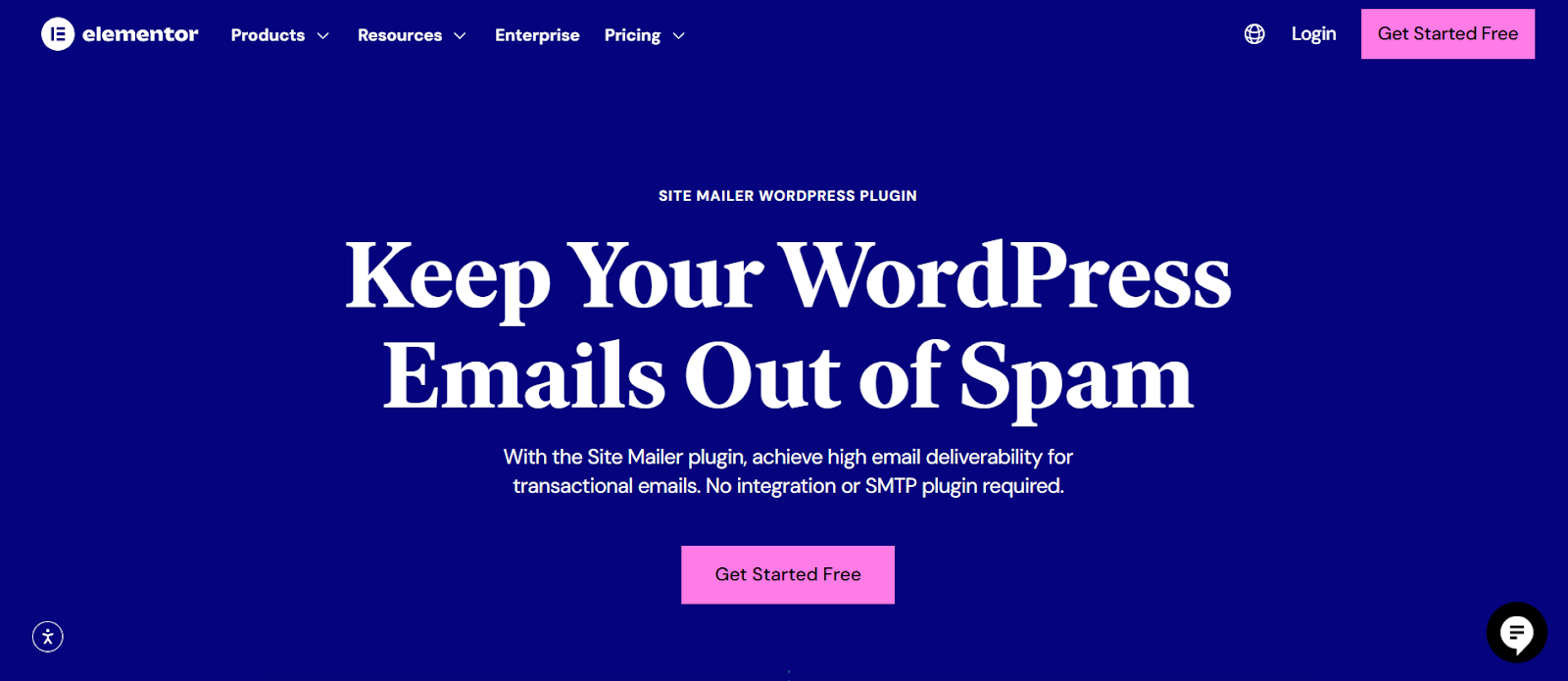Table of Contents
This guide provides 101 retail and e-commerce business name ideas to spark your imagination. We’ve organized them by category—from catchy and creative to modern and niche-specific—to help you find a name that resonates with your vision. We’ll also walk you through the process of choosing a name and what to do once you’ve found the perfect one.
Why Your E-commerce Business Name Matters
In the vast digital marketplace, your business name is your anchor. It’s often the first thing a potential customer learns about you, making it a critical component of your brand identity. A well-chosen name does more than just identify your company; it communicates your values, hints at your products, and helps you stand out from the competition.
Think about the most successful brands you know. Their names are often simple, memorable, and evocative. A strong name can significantly influence consumer perception and purchasing decisions. In fact, studies show that brand familiarity is a major driver for consumers. According to a Nielsen report, nearly 60% of shoppers prefer to buy new products from brands they already know. A memorable and professional name is your first step toward building that familiarity.
A great name should also be a digital asset. It needs to translate into an available domain name and corresponding social media handles. This digital consistency is crucial for building a cohesive online presence and making it easy for customers to find you wherever they are. Ultimately, your name is a long-term investment in your brand’s future success.
How to Choose the Perfect E-commerce Business Name: A Quick Guide
Before diving into the list of names, it helps to have a framework for what makes a name effective. A great name isn’t just found; it’s crafted through brainstorming and careful consideration.
Brainstorming Techniques
Get your creative process started with these proven brainstorming methods:
- Start with Keywords: List words that describe your products, your niche, your target audience, and your brand’s core values. Think about materials, aesthetics, feelings, and solutions. If you sell sustainable home goods, your keywords might include eco, earth, green, conscious, home, haven, craft, simple.
- Consider Your Audience: Who are you selling to? A name that appeals to Gen Z will likely be different from one that resonates with baby boomers. Think about their slang, their values, and their aesthetic preferences.
- Use Name Generators: Online name generators can be a good starting point for inspiration. While they often produce generic results, they can help you see new word combinations and spark a more creative idea.
- Create New Words: Combine two words (like “Pinterest” = pin + interest) or use a word from another language. This can lead to a unique and highly brandable name.
- Experiment with Wordplay: Puns, rhymes, and alliteration can make a name more memorable and fun. Just ensure it aligns with your brand’s overall tone.
The Essential Checklist Before You Decide
Once you have a shortlist of names, run them through this checklist to ensure you’re making a sound decision.
Check for Availability
This is a critical, non-negotiable step. Before you fall in love with a name, check if the domain name is available. A .com domain is still the gold standard and is generally preferred for its authority and memorability. Also, check for the name’s availability on major social media platforms like Instagram, Facebook, TikTok, and X (formerly Twitter).
Keep it Simple and Memorable
A great name should be easy to say, spell, and remember. Avoid using complex words, awkward spellings, or hyphens and numbers, as these can make it difficult for customers to find you online. Say the name out loud to hear how it sounds.
Reflect Your Brand and Niche
Does the name fit your business? While an abstract name can work with strong branding, a name that hints at what you sell can give you an immediate advantage. “The Cozy Mug” is instantly understandable for a store selling coffee cups.
Consider Future Growth
Don’t paint yourself into a corner. A name like “Seattle Sock Company” could be limiting if you decide to sell other types of apparel or expand beyond Seattle. Choose a name that is broad enough to accommodate your future ambitions.
Conduct a Trademark Search
To avoid potential legal issues, do a preliminary search to see if another company is already using your chosen name, especially within your industry. You can use the U.S. Patent and Trademark Office’s (USPTO) search tool for this.
101 Retail and E-commerce Business Name Ideas by Category
Here is a comprehensive list of 101 name ideas, broken down by style and industry, to inspire you.
Catchy & Creative Names
These names are designed to be memorable and unique. They often use evocative imagery or intriguing word combinations to pique curiosity and create a distinct brand personality.
- The Gilded Sparrow
- Pixel & Press
- Northbound Supply
- The Alchemy Shop
- Crimson & Clover
- Fable & Frame
- The Wandering Post
- Juniper & Jade
- Oakhaven & Co.
- The Sunstone Collective
- Ember & Ash
- Saltwater Goods
- The Paper Willow
- Meridian Makers
- The Fox & The Fig
Modern & Minimalist Names
Modern names are often short, sleek, and sophisticated. They rely on simplicity and a clean aesthetic to convey a sense of quality and focus. These names are perfect for brands in fashion, tech, or design.
- Hue
- Stance
- Parallel
- Arc
- Loom
- Croft
- Vela
- Onyx
- Cove
- Ridge
- Trace
- Forma
- Venn
- Spoke
- Elara
Niche-Specific Names
A name that clearly communicates your niche can be incredibly effective at attracting the right customers. It tells them instantly that they are in the right place.
For Fashion & Apparel
- The Threaded Arch
- Urban Weave Co.
- Stitch & Seam
- The Modern Drape
- Canvas & Clay Apparel
- The Style Signet
- Fifth & Fleece
- Linen & Liberty
- The Pocket Square
- Vogue & Vessel
For Home Goods & Decor
- Hearth & Horizon
- The Crafted Nook
- Gable & Grain
- The Polished Post
- Stillwater Home
- The Wicker House
- Stone & Stem
- Terra & Table
- The Cozy Kiln
- Anchor & Abode
For Beauty & Skincare
- Petal & Pore
- True Bloom Botanics
- The Gleam Lab
- Aura & Elm
- Barefaced Rituals
- The Dewdrop Co.
- Earthen Elixir
- Sunstone Skincare
- The Nectarist
- Radiance & Root
For Eco-Friendly & Sustainable Products
- Earthly Edit
- Kindred Goods
- The Conscious Cart
- Greenward Bound
- Pure & Planet
- The Humble Sprout
- Renew & Reside
- The Common Good Co.
- Evergood Collective
- Leaf & Loom
Names Using Wordplay & Puns
A clever name can be highly memorable and show off your brand’s personality. These names often have a lighthearted and friendly feel, which can help build a strong connection with customers.
- Sew Good
- The Daily Grind (for coffee or workwear)
- Nailed It (for nail products)
- On the Rocks (for barware)
- Just My Type (for stationery or decor with text)
- Wood You Believe
- The Bee’s Knees (for honey or natural products)
- Hot Shot (for coffee or spicy foods)
- Plant-Parenthood
- For Keepsake
Two-Word Combination Names
Combining two strong, evocative words can create a name that is both elegant and meaningful. The ampersand (&) is often used to add a touch of classic sophistication.
- Onyx & Oak
- Sage & Salt
- Copper & Current
- Flint & Flame
- Fern & Fable
- Willow & Wave
- Poppy & Pine
- Quill & Compass
- Slate & Stem
- Birch & Beam
- Ivy & Ink
- Bramble & Brand
- Finch & Folk
- Gold & Grain
- Pearl & Page
- River & Reed
- Stone & Story
- Thistle & Thorn
- Vine & Vessel
- Wool & Wheel
- Zenith & Zephyr
You’ve Chosen a Name—What’s Next?
Congratulations on picking a name! This is a huge milestone. Now it’s time to put that name to work and build your brand. Here are the essential next steps to transform your name into a fully operational e-commerce business.
Secure Your Digital Assets
Before you do anything else, claim your name online. This step is crucial for protecting your brand identity.
- Register Your Domain: Immediately purchase the domain name you’ve chosen. Use a reputable domain registrar and consider registering for more than one year to show commitment.
- Claim Your Social Media Handles: Create profiles for your business on all the social media platforms relevant to your brand, even if you don’t plan to use them right away. This prevents others from taking your name and ensures consistency across your digital footprint.
Build a High-Performing, Secure Online Store
Your e-commerce website is your digital storefront, and its quality will directly impact customer trust and sales. Building a successful store involves more than just listing products; it requires a strategic approach to hosting, design, performance, and communication.
Choosing the Right Hosting
Your hosting is the engine of your online store. For e-commerce, you need a provider that can guarantee speed, security, and scalability. A slow or insecure site can drive away customers and damage your reputation.
Consider a performance-focused cloud hosting provider built to handle the demands of online retail. Elementor Hosting, for example, is designed for web creators who need a reliable solution. Key features for an e-commerce site include:

- Auto-scaling: The ability to accommodate sudden traffic peaks, such as during holiday sales or promotions, without your site slowing down is critical.
- Enterprise-grade security: Look for features like a premium SSL certificate, anti-DDoS measures, a Web Application Firewall (WAF), and anti-botnet protection to address modern threats and keep customer data safe.
- All-in-one support: Dealing with technical issues can be frustrating, especially when your hosting company and your website software provider blame each other. An integrated solution where you can get support for both your hosting and your website builder from one team of experts can save time and headaches.
Designing a Professional Storefront
Your website’s design is a direct reflection of your brand’s quality. A professional, intuitive, and visually appealing storefront encourages visitors to browse and buy. This is where you can translate your new business name into a compelling visual experience.
Using a flexible, drag-and-drop website builder can give you complete creative control to design a professional site. For those using WordPress as their foundation, a tool like the Elementor Editor enables web creators to build any type of website visually.

Its robust e-commerce capabilities allow you to customize key parts of a WooCommerce store, including product pages, product listings, and important transactional pages like the shopping cart, checkout, and customer account areas. The Theme Builder feature further extends this control, letting you design every part of your site’s theme, from headers and footers to archive and search result pages. You can also ensure your store looks great on any device by using responsive controls to customize the appearance for different breakpoints without needing to code.
Optimizing for Speed and SEO
In e-commerce, site speed is directly tied to revenue. Slow-loading product pages can lead to higher bounce rates and lost sales. High-quality product images are essential, but large image files are a common cause of slow load times.
Using a tool to optimize your images is a fundamental step. Image Optimizer by Elementor, for example, is a plugin designed to help websites load faster without losing image quality. It works by automatically compressing images as they are uploaded and can convert them to next-gen formats like WebP and AVIF. This can improve page load speed, enhance Core Web Vitals, and ultimately help your store rank higher in Google search results.
Ensuring Reliable Communication
An e-commerce business relies on transactional emails for critical customer communications, such as order confirmations, shipping notifications, and password resets. If these emails fail to arrive or end up in spam folders, it can lead to customer frustration and a loss of trust.
A dedicated email delivery solution can solve this problem. For instance, Site Mailer by Elementor is a plugin designed to ensure your website’s transactional emails get delivered reliably without complex SMTP setups. It focuses solely on transactional reliability, giving you confidence that your customers are receiving essential updates about their orders. Features like email logs and resend options provide greater visibility and control over this vital communication channel.

Develop Your Brand Identity
With your name and website platform in place, it’s time to build your visual brand.
- Logo Design: Create a professional logo that reflects your business name and brand personality.
- Color Palette and Typography: Choose a consistent set of colors and fonts that you’ll use across your website, marketing materials, and social media.
- Brand Voice: Define the tone and personality of your brand’s communication. Are you fun and witty, or sophisticated and professional? This voice should be consistent everywhere you interact with customers.
Conclusion
Choosing a name for your retail or e-commerce business is a foundational step that shapes your entire brand. It requires creativity, research, and strategic thinking. Use the ideas in this guide as a starting point, and follow the checklist to ensure your chosen name is memorable, available, and aligned with your long-term vision.
Once you have that perfect name, the real work of building your brand begins. By securing your digital assets, building a professional and high-performing website, and developing a cohesive brand identity, you can turn your great name into a thriving business.
Looking for fresh content?
By entering your email, you agree to receive Elementor emails, including marketing emails,
and agree to our Terms & Conditions and Privacy Policy.







